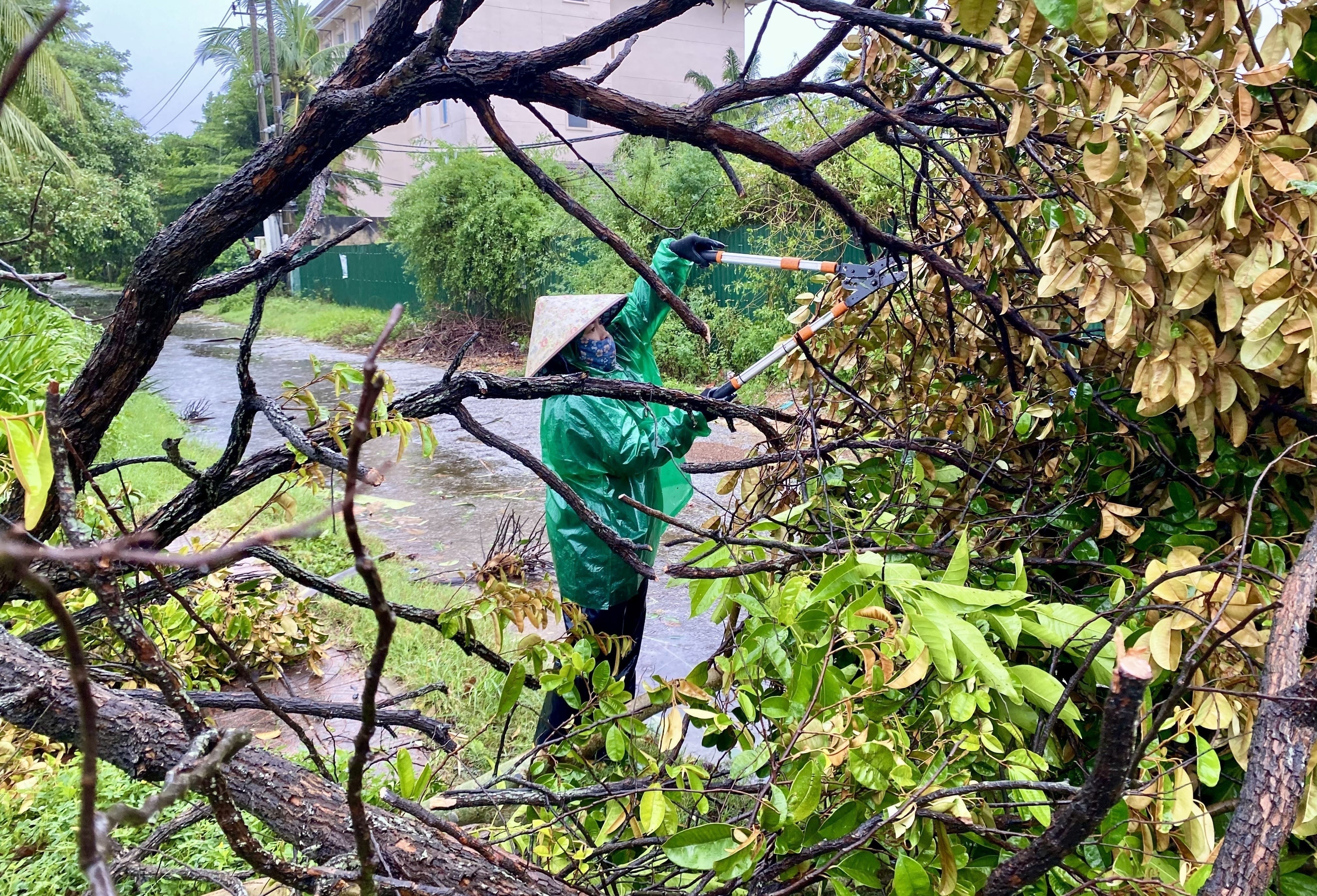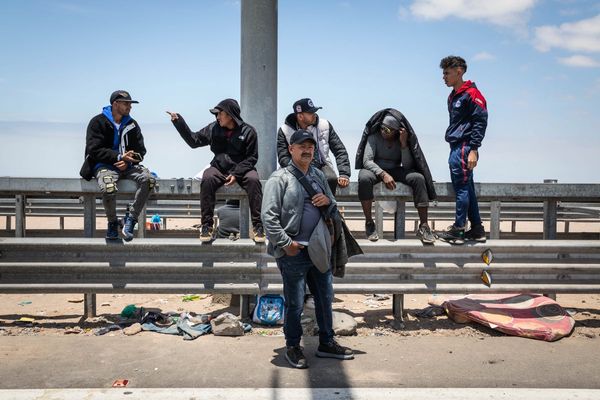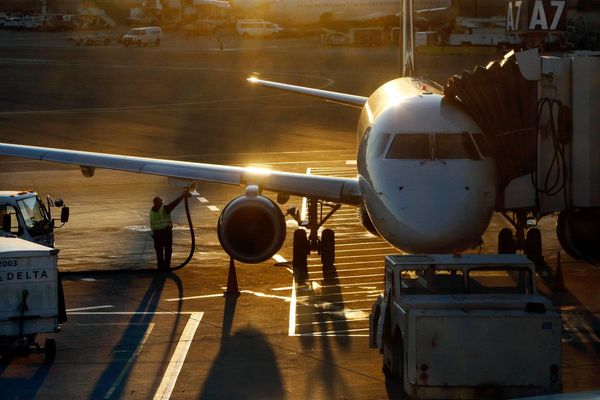Vietnam was lashed by fierce winds and torrential rain on Monday as Typhoon Bualoi barrelled into the country’s central coast, killing at least eight people, forcing mass evacuations, shutting airports and leaving hundreds of thousands without power.
At least 17 people, mostly fishermen, were missing after huge waves hit two fishing boats off Quang Tri province. Another fishing boat lost contact during the storm, the government's disaster management agency said.
The storm had killed at least 20 people in the Philippines before lashing northern Vietnam with flash floods and landslides.
Bualoi, the second major cyclone to strike Asia in a week after Super Typhoon Ragasa, made landfall in Ha Tinh province in the early hours, bringing winds of up to 133kmph and waves as high as eight metres, the national weather agency said.
Forecasters warned that while the typhoon would weaken as it pushed inland over Ha Tinh and neighbouring Nghe An, the slow-moving system risked prolonging heavy rainfall across mountainous areas.
Authorities in Vietnam moved quickly to prepare. State media reported that the coastal city of Da Nang had relocated more than 210,000 people, while the neighbouring city of Hue evacuated 32,000 residents from low-lying zones.
Fishing boats were ordered back to shore across central and northern provinces, and the Civil Aviation Authority suspended operations at four airports, including Danang International.
By Monday, more than 347,000 families had lost power, local outlets said, as gusts ripped corrugated iron from rooftops and toppled concrete pillars.
"I stayed awake the whole night fearing the door would be pulled off by strong winds," Ho Van Quynh from Nghe An province told Reuters.
His neighbours said they spent the night trying to protect their homes as the power to their apartment building went out.
"I've witnessed many storms, and this is one of the strongest," said Nguyen Tuan Vinh, 45.
In Hue, streets were left submerged, a teenager was electrocuted during the downpour, and at least one person was reported missing after being swept away in floodwaters.
In Quang Tri province, one fishing boat sank and another ran aground while seeking shelter. Nine crew members were rescued and efforts were underway to reach two others still stranded at sea.
Photographs from the region showed people hauling fishing boats away from beaches and streets littered with broken trees as families waded through knee-deep water.

Authorities warned that Bualoi could linger over central Vietnam for days, raising the likelihood of severe flooding.
“The storm is likely to move slowly, bringing longer periods of wind and rain and raising risks of damage and landslides,” Dr Hoang Phuc Lam of the National Center for Hydro-Meteorological Forecasting said.
Forecasts said there could be more downpours through 1 October.
The impact follows Bualoi’s destructive passage through the Philippines late last week. At least 20 people were killed there, mostly from drownings and falling trees, officials said. The typhoon knocked out power in several towns and cities and forced 23,000 families into evacuation centres.
The back-to-back storms of Ragasa and Bualoi have underscored the vulnerability of coastal Asia to increasingly severe cyclones. Scientists warn that climate change is fuelling stronger, wetter storms by warming the oceans, which in turn drives more intense winds and rainfall.
In Vietnam, where typhoons regularly batter central provinces, authorities have stepped up disaster drills, but the scale of this week’s evacuations highlights the continuing risks to infrastructure and communities.
Bualoi has already compounded disruption across the region. In China, where Ragasa forced millions from their homes days earlier, supply chains are still recovering from factory shutdowns and shipping delays. Analysts say the latest typhoon will further strain food and fuel logistics in Southeast Asia.
By Monday afternoon, Bualoi’s winds had eased to around 117kmph as the system tracked northwest, but forecasters stressed that the danger was far from over. The storm’s slow pace could prolong rainfall across northern Vietnam, with rivers already swollen and the ground saturated.
As the clean-up began in areas hit first, Vietnam’s government warned residents in flood-prone districts to remain on alert.
In Ha Tinh, where Bualoi first made landfall, families secured belongings in upper floors of their homes as water levels rose, while volunteers and soldiers worked to reinforce riverbanks and clear fallen debris.
The storm’s arrival marks one of the fiercest typhoon weeks in recent memory for Asia, leaving trails of destruction from the Philippines to Taiwan, southern China and now Vietnam.
Typhoon Ragasa weakens in Vietnam after leaving trail of destruction across China
Bridal jewellery made from gold found in e-waste is launched by Royal Mint
Artists invited to breathe life into Sycamore Gap tree
Climate change brings Europe fewer but heavier hailstones, experts find
Government urged to push ahead with climate plans amid growing net zero pushback
PM urged to go to UN climate talks amid faltering response to dangerous warming







